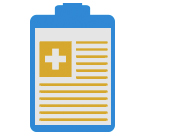Diabetes affects around 3.5 million people in the UK – 1% of whom have been diagnosed with Type 1 diabetes. However, despite a diabetes diagnosis, travelling should not be restricted. Instead, people with diabetes should be able to travel the world without too many difficulties, as long as prior planning is considered.
Despite this, there are factors that will come into play when travelling. These include your diet, the level of activity you’ll be undertaking and the climate. Each can have an effect on blood glucose levels and impact your health when overseas.
Of course, you’ll also want to know what equipment and supplies can be taken abroad, whilst understanding the best precautions to take with either type of diabetes. Throughout this guide we’ll address the important matters for travelling with diabetes, such as:
- Crucial advice for planning your trip.
- Maintaining health and controlling glucose levels.
- The effect of different climates on your condition.
Planning your next vacation
If you want to see the world, but have diabetes, this shouldn’t be enough to put you off travel in its own right. However, you do need to take care and ensure you’re well prepared for the trip.

Glucose control
Depending on where you’re travelling to, you may be entering a new time zone. This could affect your medication timings and will need discussion with your consultant. For instance, it’s not uncommon for blood glucose levels to be disrupted during travel, so make sure you’re well prepared.

Illness
Your diabetic consultant should also advise on what to do should you become ill when travelling. Advice should be provided on checking urine for ketones and how to seek medical help when abroad.

Doctor’s letter
It would also be advised to travel with a doctor’s letter, which can be offered before you venture overseas. A doctor’s letter will be particularly useful when navigating customs and security at airports, whilst making it easier to replace medication abroad. For diabetics, a doctor’s letter should include:
- A list of the medication you are prescribed with.
- The monitoring and dispensing equipment required.
- Details on the need to carry supplies in your hand luggage (if travelling by plane). This includes insulin, needles and syringes.
- Contact details for your diabetes team.
Be aware, there may be a charge for a doctor’s note. However, to save further expenses in the future, you could ask for a long-term certificate.

Medication & Equipment
Before travelling abroad for a sustained period of time, you should speak to your GP and ensure all medication and glucose monitoring equipment has been provided. For instance, it would be advised to:
- Carry twice as much medication as you need, to safeguard in the event of delays, losses and damages.
- Pack spare glucose monitoring equipment and ensure these are carried in hand luggage.
- Keep all medication in its original packaging.
- Know what certain medication is called in foreign countries. Knowing generic names and brands will come in handy.
- Find out how blood glucose levels are measured overseas. We have provided a conversion chart for use later in this guide.
If you regularly suffer from hypoglycaemic attacks, you should also carry paperwork to highlight your diabetic condition.
What should a diabetic pack for travelling?
As a diabetic, the chances are you’ll always be prepared. And as you can expect, travelling abroad with diabetes requires even more preparation. Knowing what to pack will ensure nothing’s left behind.
The following are essentials for what should be packed when travelling:
- Twice the amount of medication and equipment you would normally need for the length of time you’re away. This includes insulin, needles or tablets.
- Your cool bag for storing insulin.
- Monitoring equipment to keep an eye on your glucose levels. Bear in mind that altitude and varying climates can provide false readings. Seek advice on this before travelling.
- A diabetes identity card and/or doctor’s letter.
- Extra carbohydrates for travelling, in case you face delays. Whilst you can contact an airline to request a specific diabetic meal, these often contain little in the way of carbohydrates.
- An up-to-date list of all medication you have been prescribed with and are currently taking.
It’s often advised for diabetics to carry a pack in their hand luggage, with everything they’d need for the journey. This would include injection pens, insulin, sensors, pumps and spare pump batteries.
As mentioned above, you should also consider that glucose levels could be measured differently in foreign countries. A conversion table has been provided below.
| mmol/l | mg/dl | mm0l/l | mg/dl |
| 1 | 18 | 13 | 234 |
| 2 | 36 | 14 | 252 |
| 3 | 54 | 15 | 270 |
| 4 | 72 | 16 | 288 |
| 5 | 90 | 17 | 306 |
| 6 | 108 | 18 | 324 |
| 7 | 126 | 19 | 343 |
| 8 | 144 | 20 | 360 |
| 9 | 162 | 21 | 378 |
| 10 | 180 | 22 | 396 |
| 11 | 198 | 23 | 414 |
| 12 | 216 | 24 | 432 |
Airport security & customs
If you’re travelling abroad in the near future, you may well be flying to your chosen destination. As such, you’ll need to get through customs and security, both in the UK and overseas. First off, you should be aware that even over the counter drugs in the UK, could be banned in certain countries. Therefore, you’ll need to carry out plenty of research before leaving.
In order to reduce stress at the airport and ensure you get through customs hassle-free, take a look at our tips for making it through security.
1. Keep all your diabetic medication clearly labelled and in its original packaging.
2. Make sure you’re not rushing around at the airport, by leaving plenty of time to arrive and check-in. Stress can affect your diabetes so it’s important to remain calm and prepare thoroughly.
3. Have a doctor’s prescription to hand, so you’re able to quickly provide proof that the medication is required. This is the same for any extra equipment you’ll need when journeying overseas.
4. Plan ahead and speak to the airline in advance to ask permission for insulin to be stored in refrigerator conditions. However, don’t panic if this can’t be done – insulin will last at room temperature for several weeks.
5. Know what can and can’t be taken on board with a particular airline, so you’re not caught short at the last minute.
6. Extra equipment and medication that won’t be needed on board can be stored in your checked-in luggage.
7. Carry treatment for a hypoglycaemic attack. This could be sugary foods or a specific gel for treating low blood glucose.
8. If you’re questioned about the medication or equipment you wish to take on board, try to relax and keep calm – rather than being flustered or frustrated. Ask to speak to a Transportation Security Officer Supervisor is necessary.
9. Be prepared for a pat down if you wear an insulin pump. Security may not be satisfied with you simply walking through a metal detector.
10. Don’t expect airport security to know the ins and outs of diabetes, so if required, politely say that an insulin pump can’t be removed.
11. Keep your checked-in luggage protected with a TSA-approved lock. Screeners can open this without causing damage and security personnel will recognise the symbol.
 Visit Our Main Site
Visit Our Main Site

